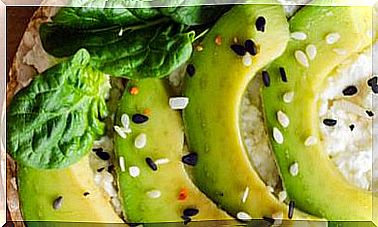Glycemic Index: It Helps, But It Can Fool You
Avoiding glucose spikes not only allows you to better dose energy but also helps prevent diabetes, but being guided by the glycemic index is not enough. The first thing is to choose healthy foods.

Do you need to look at the glycemic index of foods? Does it only benefit people with diabetes? Is a diet without high glycemic foods healthier?
I wish nutrition was so simple that it allowed you to answer “yes” or “no” to those questions. It is actually much more complex and depends on many variables, but before we get into the subject, let’s start at the beginning.
Glycemic index and glycemic load – what a mess!
The glycemic index (GI) is a parameter that measures how quickly and in what quantity carbohydrates from a food reach the blood in the form of glucose. And it is compared with the result that would be obtained by ingesting the same amount of pure glucose, to which we give a value of 100.
Thus, if a food has a GI of 30, it means that it increases blood glucose by 70% less than the same amount of glucose would.
When is the glycemic index high or low
There are tons of tables of foods rated according to their GI on the internet, but if you want to have that information, better turn to a reliable source, such as the Harvard tables.
In general, we consider foods to have a low, medium, or high glycemic index when it falls in these ranges:
- High GI: between 70 and 100
- Medium GI : between 40-55 and 70
- Low GI: below 40-55 (depending on which source we consult it tells us 40 or 55).
But it is relative: also look at the glycemic load
In addition to the GI, it is important to know another concept: the glycemic load (GL).
The CG is obtained by multiplying the GI by the carbohydrates present in a specific amount of food.
This helps us to put the IG in perspective, although to understand it nothing better than an example.
Let’s take a food with a high glycemic index such as a cooked potato (82). When assessing its glycemic load and seeing the amount of carbohydrates it has, we see that the glycemic load of a 150-gram serving stays at 21.
The same thing happens with several fruits : even if they are fruits with a high glycemic index, the amount of carbohydrates they contain per serving is small and that makes their glycemic load ridiculous.
This is the case of watermelon, with a high GI (72) and, however, a CG of 4 for a serving of 120 grams.
Does it make sense to choose foods based on the glycemic index?
It should not be the main or defining criteria for choosing foods. The glycemic index does not give us an indication of how healthy a food is or is not, which is why we should guide ourselves when choosing our food.
A product can have a very low glycemic index and be totally unhealthy, such as a sweetened soda. Or it can be higher and be a healthy food for daily consumption, such as any fruit.
The combination of foods influences the glycemic load
Also, looking at the glycemic index of a single food does not make much sense, since we generally eat several foods together.
A refined, high-glycemic cereal, mixed with lots of vegetables and cooked with a good stir-fry in olive oil, will dramatically lower your glycemic response, as it will be dampened by fiber and fat.
That is to say, it is no longer only the serving size and the amount of carbohydrates per serving that a certain food has, but there is also another third parameter that modifies the impact on blood glucose: the rest of the ingredients that accompany it.
And that’s not all, we should also add the different individual response, which causes the metabolization of carbohydrates to have important variations from one person to another.
So is it the fiber, is it the fat, or is it the glycemic load?
It’s all of this: a healthy diet, which is by definition rich in fiber as it includes plenty of fruits and vegetables, legumes, and whole grains, will likely be a low-GF diet.
But it is difficult to know if its benefits are due to the former or the latter. That is why many entities, including the EFSA, the American Diabetes Association (ADA) or the Academy of Nutrition and Dietetics, are cautious with this method and consider that it can lead to confusion and unfortunate approaches. And also the formulas to calculate the GI, can contain quite a few errors.
In fact, the ADA states that it is difficult to distinguish between the effect of fiber and that of GI, and that the latter can have large individual variations and is also closely linked to the type of food chosen, as we mentioned.
So it seems more sensible to focus on good food choices, rather than their GI. Or, in any case, a combination of both criteria that protects us from prioritizing unhealthy foods just because they have a low GI, or banishing healthy foods just because their GI is high.
In any case, people with diabetes or insulin resistance, who could benefit the most from taking these parameters into account, should be properly instructed in their use by healthcare professionals in order to benefit from it.
Tips to reduce glycemic load and control blood glucose peaks
If you have diabetes, choosing foods with a low or moderate glycemic index can help keep your blood glucose more stable.
These indications can help you when planning your diet:
- Accompany your meals with a good amount of greens and vegetables.
- Prefer whole grains, and that they are not what predominates in your plate.
- Avoid adding sugar, honey, or syrups to your food.
- Avoid sweets, pastries, ice cream, etc., as well as sodas and other sugary drinks.
- Always prefer the whole fruit rather than juice.
- He prefers whole dairy products over skimmed ones, always natural, unsweetened.
- He prefers pasta “al dente” rather than overcooking it.
- Do not binge: it is better to divide the food into several meals throughout the day.
- Choose foods rich in healthy fats like avocado or nuts, or add extra virgin olive oil to your meals.
- Get physical activity.









